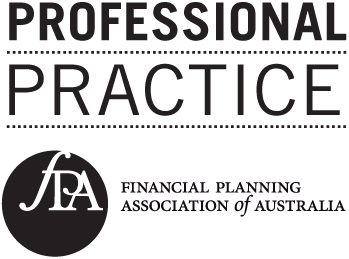A new (financial) year’s resolution for your SMSF
One of the most fundamental provisions in superannuation law, the in-house asset rule, is also one of the easiest for SMSF trustees to unintentionally breach.

Under the in-house asset rule, SMSFs are generally prohibited from making loans, providing leases or having investments with related parties and entities that exceed five per cent of a fund's total asset value.
The few exceptions to the in-house asset rule include business real estate.
Significantly, SMSF trustees are prohibited from providing any loans or financial assistance to members or their relatives - even if the transaction does not result in exceeding the 5 per cent limit for in-house assets.
A sharp rise in the value of an in-house asset and the indifferent (or worse) performance of some other fund-owned assets may lead to unintentional overshooting of the five per cent limit for in-house assets.
Fund trustees who breach the in-house asset rule can may a high price - apart from any penalties.
If the five per cent ceiling under in-house asset rule is exceeded at June 30 in a year, an SMSF must sell some in-house assets in the following financial year.
Meg Heffron writes in her latest newsletter that this sale of some assets must still occur even if their "value subsequently falls below the five per cent in the following year" by the time of the sale.
This might, of course, result in the forced sale of an asset that the SMSF trustees really want to keep for their members' long-term benefit.
Unfortunately, many trustees would not realise that their SMSFs have exceeded the in-house limit until fund assets are valued at market value as at June 30 each year, as is legally required.
Forward-thinking SMSF trustees no doubt keep a close watch on movements in the value of all of their funds' assets, including in-house assets.
By monitoring changing asset values in their SMSFs, fund trustees can ensure that their portfolio hasn't strayed too far from their target or strategic asset allocation. And trustees can also determine whether or not their SMSFs are likely to exceed the in-house asset rule by the end of a financial year.
SMSFs trustees who are aware some time before the end of a financial year that changes in asset values may lead to a contravention of the in-house asset rule may be in the position to take remedial action. This should not be left until the closing days of a financial year.
Heffron writes that such action may include making extra contributions, rolling super over from another super fund and deferring a proportion of superannuation pensions - in addition to the minimum compulsory amount. Again, such strategies should not be left to the final days of a financial year.
Perhaps the bottom-line is that SMSF trustees should always keep a close watch on changing asset values in their fund, not just when nearing June 30 looms near, and be ready to seek specialised professional advice.
By Robin Bowerman
Smart Investing
Principal & Head of Retail, Vanguard Investments Australia
24 June 2015
Latest Newsletters
Hot Issues
- ATO reviewing all new SMSF registrations to stop illegal early access
- Compliance documents crucial for SMSFs
- Investment and economic outlook, October 2024
- Leaving super to an estate makes more tax sense, says expert
- Be clear on TBA pension impact
- Caregiving can have a retirement sting
- The biggest assets growth areas for SMSFs
- 20 Years of Silicon Valley Trends: 2004 - 2024 Insights
- Investment and economic outlook, September 2024
- Economic slowdown drives mixed reporting season
- ATO stats show continued growth in SMSF sector
- What are the government’s intentions with negative gearing?
- A new day for Federal Reserve policy
- Age pension fails to meet retirement needs
- ASIC extends reportable situations relief and personal advice record-keeping requirements
- The Leaders Who Refused to Step Down 1939 - 2024
- ATO encourages trustees to use voluntary disclosure service
- Beware of terminal illness payout time frame
- Capital losses can help reduce NALI
- Investment and economic outlook, August 2024
- What the Reserve Bank’s rates stance means for property borrowers
- How investing regularly can propel your returns
- Super sector in ASIC’s sights
- Most Popular Operating Systems 1999 - 2022
- Treasurer unveils design details for payday super
- Government releases details on luxury car tax changes
- Our investment and economic outlook, July 2024
- Striking a balance in the new financial year
- The five reasons why the $A is likely to rise further - if recession is avoided
- What super fund members should know when comparing returns
- Insurance inside super has tax advantages
- Are you receiving Personal Services Income?
- It’s never too early to start talking about aged care with clients
- Taxing unrealised gains in superannuation under Division 296
- Capacity doubts now more common


